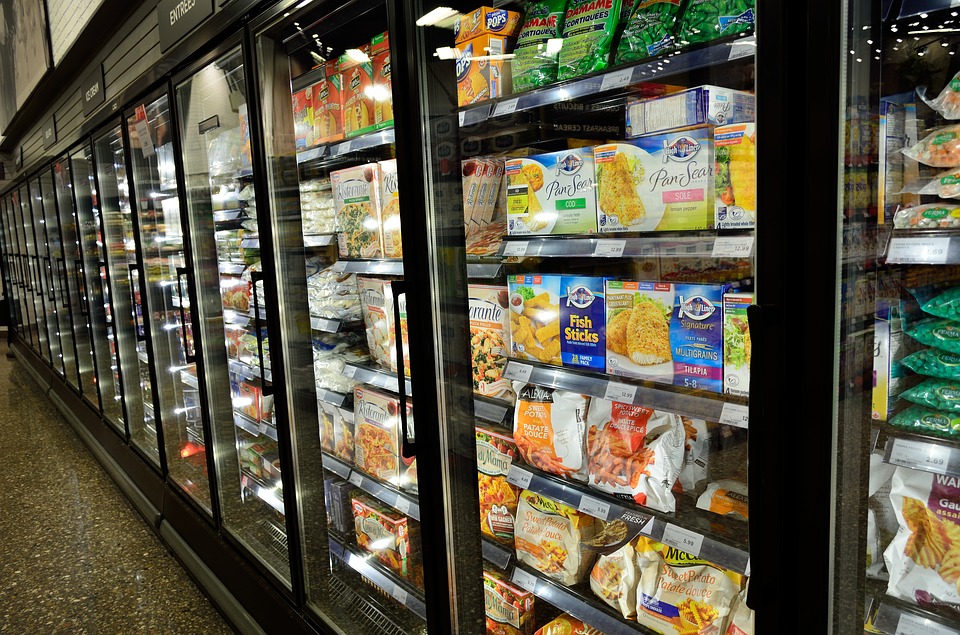The U. S. Department of Agriculture (USDA) reminds families to follow food safety practices to prevent foodborne illness when it comes to preparing frozen foods.
After a year of virtual learning, households are adjusting to new schedules and routines as students and schools return to in-person learning. When it comes to packing lunches, preparing after-school snacks, or quick and convenient dinners between after-school activities, frozen foods are a popular option. In a recent USDA study, 76 percent of study participants said they would buy not-ready-to-eat frozen chicken products for their children to prepare at home.
“I appreciate the convenience of frozen foods," said Sandra Eskin, USDA’s Deputy Under Secretary for Food Safety. “Getting your kids involved in frozen food prep can help reduce the risk of foodborne illness for the whole family. Have them instruct you on proper cooking from the package label or make a game of watching the food thermometer reach the safe internal temperature on the package instructions."
Follow the below tips to prepare frozen foods safely all school year long.
Check the Package
Not all frozen foods are fully cooked or ready-to-eat. It can be difficult to tell when foods are not-ready-to-eat when they have browned breading, grill marks or other signs that normally show that a product has been cooked. In the USDA study, 22 percent of the participants preparing frozen foods were not sure if the products were raw or fully cooked despite reading the product instructions, and among these participants, nearly half incorrectly believed it was fully cooked.
- Always check the product packaging to see if the food is fully cooked (and therefore ready-to-eat) or not-ready-to-eat.
- Frozen products may be labeled with phrases such as "Cook and Serve," "Ready to Cook" and "Oven Ready" to indicate they must be fully cooked to safe internal temperatures to be eaten safely.
Wash Hands and Surfaces
Following proper handwashing steps before, during and after preparing frozen food reduces the risk of transferring harmful bacteria from your hands to food and other surfaces. It is important to complete all five steps to handwashing:
- Wet your hands with clean, running water, and apply soap.
- Lather your hands by rubbing them together with soap. Lather the backs of your hands, between your fingers and under your nails.
- Scrub your hands for at least 20 seconds.
- Rinse your hands well under clean, running water.
- Dry your hands using a clean towel.
In the same study, 97 percent of participants did not attempt to wash their hands during the preparation of not-ready-to-eat frozen, breaded chicken products. Of those who tried, 95 percent failed to wash their hands properly with all five steps.
Use a Food Thermometer
Although there are cooking instructions on frozen food packages, the only way to know if the food has been thoroughly cooked to a safe internal temperature is to measure it with a food thermometer. Cook not-ready-to-eat frozen foods to the following temperatures:
- Beef, pork, lamb and veal (steaks, roasts and chops): 145 F with a three-minute rest time
- Ground meats (beef, pork, lamb and veal): 160 F
- Poultry (whole or ground): 165 F
All ready-to-eat or fully cooked frozen foods should be thoroughly heated to 165 F.
Keep Out of the Danger Zone
After cooking or heating frozen foods, they need to be eaten or refrigerated promptly for safe storage. When foods are in the "Danger Zone" (40 F – 140 F) for too long, bacteria can reach dangerous levels that can cause illness.
- Store food in the refrigerator within two hours after cooking or heating (one hour if over 90 F).
- If packing frozen foods for lunch or to take outside of the home, fully cook or heat the food and then pack with a cold source (such as a frozen gel pack, water bottle, or juice) to keep out of the Danger Zone.
- Leftovers that are handled properly may be safely refrigerated at 40 F up to four days. Use an appliance thermometer to make sure your refrigerator is below 40 F.
If you have back-to-school food safety questions, you can call the USDA Meat and Poultry Hotline at 1-888-MPHotline (1-888-674-6854).
 Benefits.com Advisors
Benefits.com Advisors
With expertise spanning local, state, and federal benefit programs, our team is dedicated to guiding individuals towards the perfect program tailored to their unique circumstances.
Rise to the top with Peak Benefits!
Join our Peak Benefits Newsletter for the latest news, resources, and offers on all things government benefits.




















